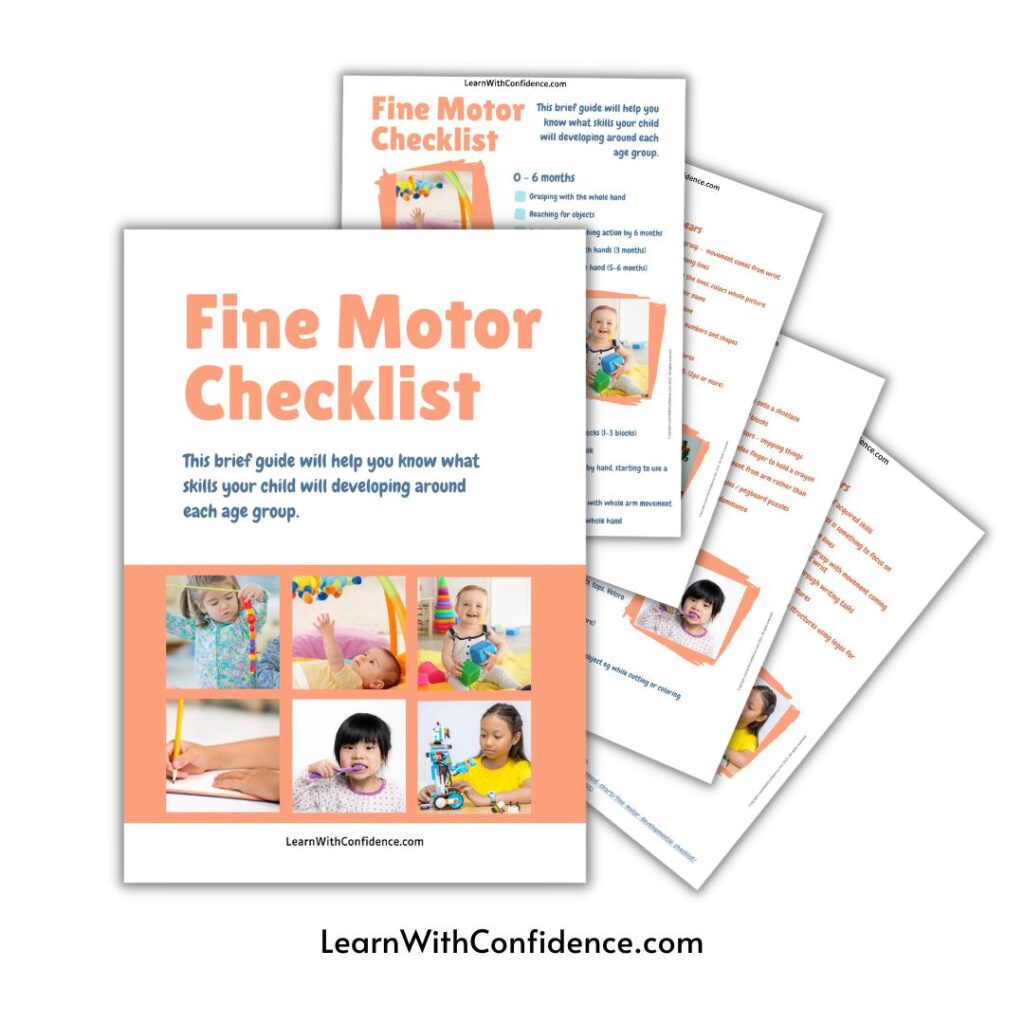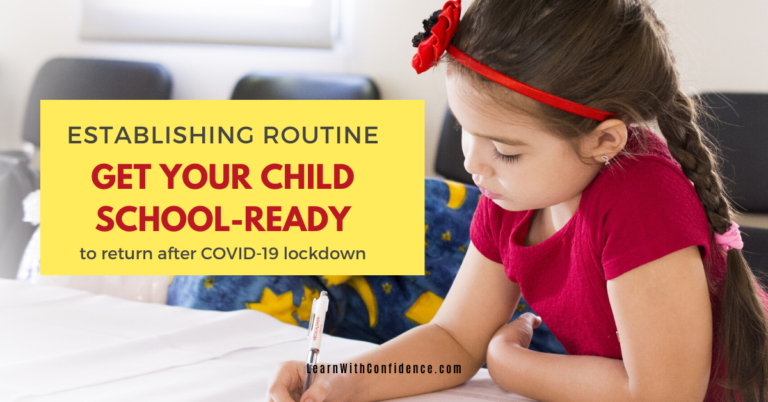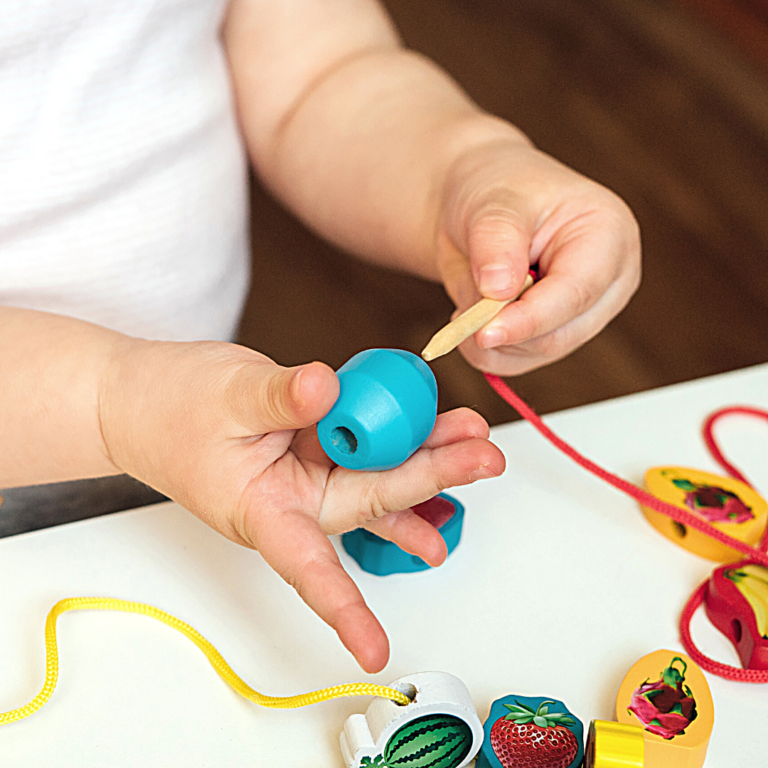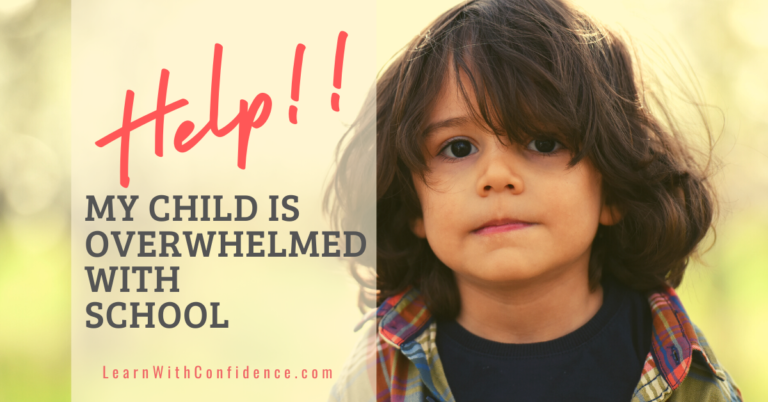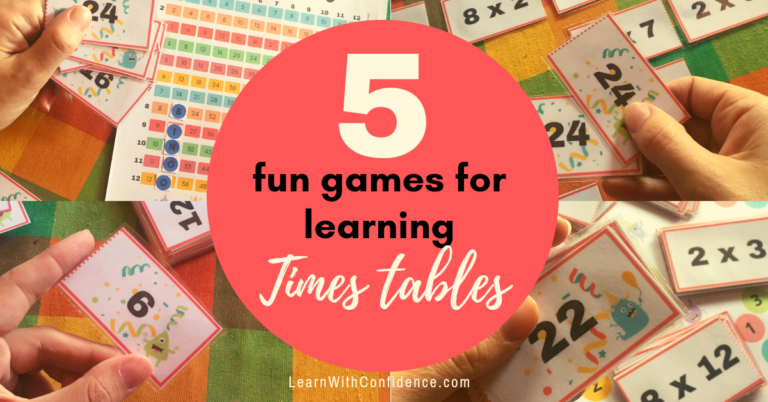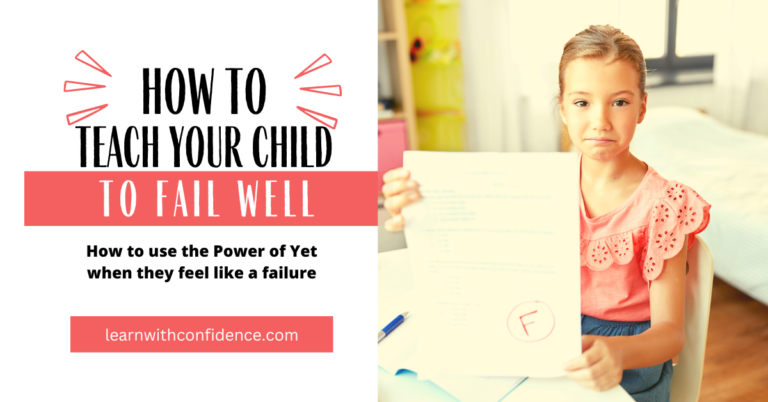3 Early Developmental Skills that will set your child up for success in school
These three early developmental skills are crucial to your child’s success in school because so many other skills rest on these. Developing your child’s fine motor, gross motor and cognitive skills in their early years, can make all the difference to how they apply those skills later on. In this article you’ll find a HEAP of examples and practical ideas you can use to develop all of these important skills.
Have you ever watched your child play on a jungle gym or build a puzzle?
I mean really watched them.
And taken in what an incredible thing it is that they’ve actually learnt how to do that task.
I was watching my daughters building a puzzle the other day and, maybe it’s just because I LOVE everything learning and child development, but I was just amazed at how they matched colours and completed pictures, how they planned which pieces to use when and then connected those pieces together carefully.

If you have a toddler or preschooler you know what I’m talking about – those GIANT leaps in their development and learning.
Like suddenly they can just do a task they’ve been struggling with for weeks. It’s incredible!
But the question in the back of your mind is always the same: Are they developing everything they need to, in the right time?

What skills is my child going to need for success in school?
If your child is a toddler or in preschool, you’re likely reading this article because you want to put the things in place now, that are going to help them be successful in school one day.
And I commend you for starting early.
We always hear “prevention is better than cure” and when it comes to developmental and learning challenges, I completely agree. If you can equip your children with the tools and opportunities to develop these skills early, they will find the things they do in school later, a lot easier.
But first I have a question for you
What does it look like when you think of your child experiencing school success one day?
Maybe it looks like them bringing home an A+ on their last test? Or a really great set of results for all of their subjects on their end of term report card?
Or maybe it’s more than that.
Maybe your child is successful when they face challenges and work hard to overcome them. When they try really hard and don’t give up. When they are a good and loyal friend, a helpful and respectful student. Or when they are able to articulate their thoughts and opinions, and respect others’ too.
Success in school is so much more than grades.
And because of that, your child is going to need a bunch of different skills to make that happen.
The early developmental skills we’re chatting about here are going to prime your child’s body and brain for a range of other activities they will do during their school career. And because of that, it is vital that we make an effort as young as possible to make sure these develop well.
3 Early Developmental Skills your child needs for School Success
There are 3 categories of developmental skills. They all use very different parts of your child’s brain and body but they are SO closely linked. And that’s actually great, because many activities we do with toddlers or preschoolers can use and develop all of these skills at the same time!
1) Gross motor skills
Gross motor skills are the skills that allow your child to use the “big muscles” in their body for “big” or whole-body movement.
What are Gross motor skills?
Here are some examples of where your child uses their gross motor skills in school and in everyday life:
- Balancing on one foot
- Hopping first on two feet, then one and then alternating
- Walking and then running
- Climbing a tree or jungle gym, or even over the back of the couch (cringe)
- Crawling under an obstacle, or under the bed.
- Throwing / catching / kicking a ball
- Hitting a ball with a bat of some sort
- Lifting a box of toys to put it on the shelf and other chores.
So much of the strength for these activities comes from the core. So having good core strength makes many of these activities easier.
You will hear about “crossing the midline” and “bilateral integration” a lot when you read about gross (and even fine) motor development. Both of these terms relate to your child being able to to use both sides of their body (and brain) in a coordinated way. This means that the two hemispheres of your child’s brain are making connections with each other so your child’s body can work together to perform complex task.
The gross motor function of your child’s body is also linked closely to the vestibular system (the balance system in their inner ear). This system helps them maintain what we call “postural equilibrium” which means they can move their body in space and maintain balance.
Gross motor skills are closely connected to other early developmental skills
Developing the muscles needed for gross motor skills is actually really important for developing fine motor skills too!
One can’t really separate the two.
- Shoulder stability, core muscle tone for posture, hip stability (to name a few) are some of the areas we develop through gross motor skills that enable your child to sit in a chair, at a desk and write.
- Bilateral integration allows your child to write from the left side of the page to the right and move back to the left again. Or cut out a shape with their scissors using one hand, while they’re holding the paper with the other.)
The activities we do to develop gross motor skills are also a brilliant way to develop your child’s cognitive and perceptual skills too – we’ll get to that in a bit.
2) Fine motor skills
Fine motor skills use the “small muscles” in your child’s hands for those fine movements. But as we said earlier, the stability needed for guiding those hands comes from developing their gross motor skills.
What are Fine motor skills?
Here are some examples of where your child uses their fine motor skills in school and in everyday life:
- Creating with play-dough
- Building Lego
- Putting stickers onto a picture
- Tying shoe-laces
- Doing up the buttons on their jersey
- Zipping up a jacket
- Stirring a bowl of porridge
- Coloring in pictures
- Writing
- Painting
- Cutting with scissors
The small muscles in your child’s hand must be strong and co-ordinated so they can use them to perform these very intricate tasks. Your child uses their hands for these kinds of activities as well as the muscles of their eyes. And their brain learns how to co-ordinate the hands and eyes so that together, they can get the job done.
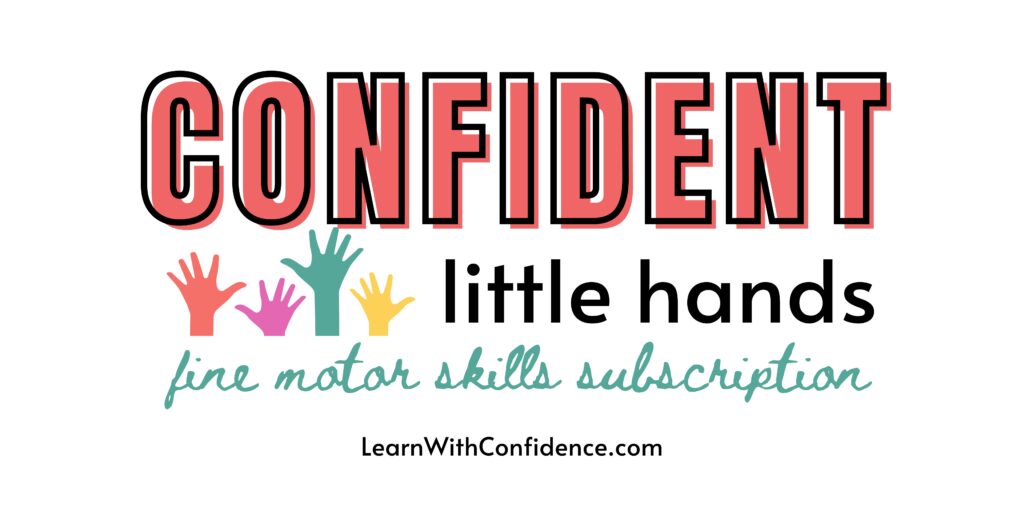
Fine motor skills are closely connected to other early developmental skills
We’ve seen how gross motor skills influence fine motor skills.
And while your child is developing these fine motor skills, they’re also developing their cognitive and perceptual skills too. This is because so many of the activities we use involve letters, numbers, colors and shapes.
3) Cognitive / Perceptual skills
Cognitive skills use the parts of your child’s brain that involve thinking, remembering, planning, reasoning and understanding. Perceptual skills use the parts of the brain that perceive patterns, size, shape and space. They also include the sense of where your body where is in space – which is called proprioception.
What are Cognitive / Perceptual Skills?
Here are some examples of where your child uses their cognitive / perceptual skills in school and in everyday life:
- Tell the difference between different sized objects
- Shapes
- Colors
- Counting and numbers
- Sequences or step-by-step
- Following and giving instructions
- Matching items based on similar characteristics
- Grouping items together that have the same qualities
- Letters and sounds
- Patterns
- Remembering items shown to them and then taken away
Remember that your child’s brain is automatically going to learn these things, based on their experiences. Your child’s brain is constantly creating connections and pathways. The more parts of the brain that are involved in an activity (in an organized and connected way) the more connections are made. When we practice, those connections become an established neural pathway. Neural pathways are how your child’s brain develops.
Cognitive / Perceptual skills are closely connected to other early developmental skills
And this is why it’s important to choose activities that use cognitive / perceptual skills while they are developing gross motor or fine motor skills.
When children use their whole bodies in space, they can be developing other cognitive / perceptual skills too. Here are a few examples:
- Swinging on a swing, or sliding down a slide develops gross motor control while engaging the vestibular system and developing your child’s proprioception (sense of where their body is in space).
- Playing soccer develops gross motor skills while your child has to perceive their body, and others’ bodies, in space as well as plan a course of how to get the ball into the back of the net.
When children are developing their fine motor skills, the activities we choose can develop cognitive / perceptual skills too. Here are some examples:
- A child may need to color in a picture about the letters they have just learned. So they are learning about the letter and the items that start with that letter while they are coloring in.
- Cutting out along a line is a fine motor skill but requires a lot of perceptual skill to know where the line starts and ends and how far to cut.
- A child may do a matching activity where they have to sort jelly beans into groups according to their color. Picking up and placing those jelly beans into different piles or bowls is a fine motor skill. Identifying their colors, matching like colors together and sorting them accordingly are cognitive/perceptual skills. If the additional task of counting how many jelly beans are in the bowl is included, that’s an additional cognitive/perceptual skill.
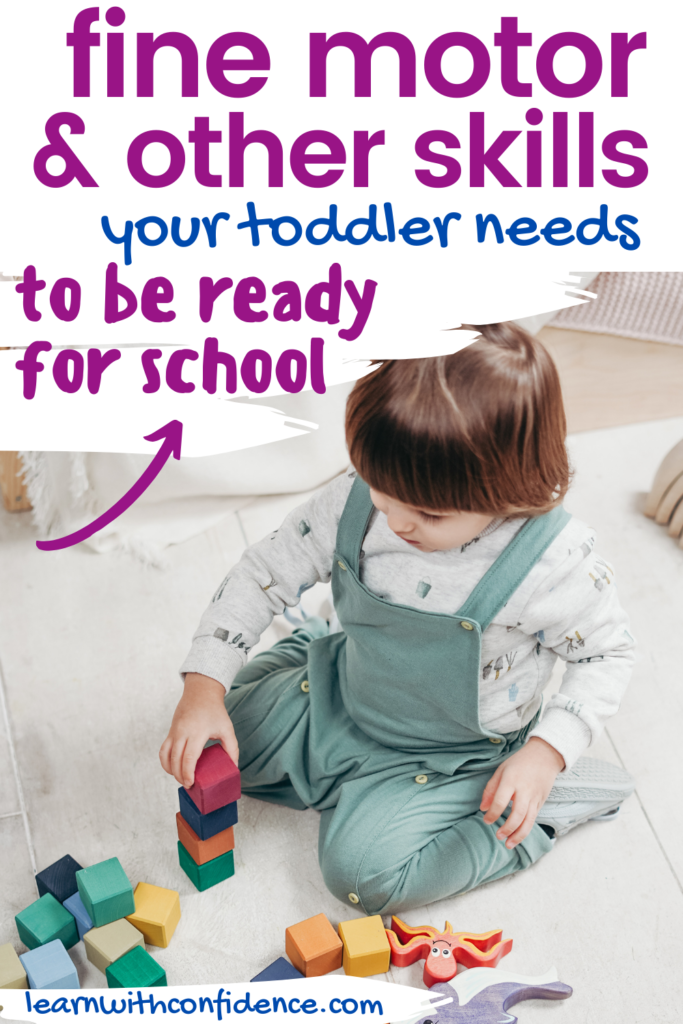
How do these early developmental skills connect with school success
It’s probably pretty easy to see how the cognitive/perceptual skills will be used in school later on.
Especially for things like reading, writing and Math.
But they form the basis for many academic skills, such as comparing, problem solving, critical thinking and planning.
So what about gross and fine motor skills? Besides being good at school sports and writing, what value do they have?
Think about sitting in the classroom. Your child will sit on a chair, at a desk, for most of his school day. Sitting with the right posture, with their back and limbs all at the right angles, will mean your child will feel more comfortable through the day.
A child with poor muscle tone (I’m talking ‘big’ muscles now), poor shoulder and hip stability will struggle to do this. The result is likely that he or she will squirm in their seat the whole day trying to find a position that is comfortable, because their muscles get very tired, very easily. Their writing will be untidy because it’s hard work to hold their arm in the right position and because of that they’re holding the pen wrong and so their hand gets tired. Plus, they’re likely hunched over their desk which means they’re not breathing properly and probably feel tired (for lack of oxygen), as well as have a sore, tired back and shoulders by the end of the day.
And that child doesn’t even know that that’s not normal, because they’ve known no different.
Have you seen that child in a class?
I have.
And let me tell you something else about that child.
That child cannot pay attention to what they’re hearing the teacher saying. He’s distracted by the discomfort he’s feeling and tries to relieve it by squirming, by getting out of his seat regularly, and asking to leave the class all the time. He looks disorganized and messy because he can’t make his hands work properly to cut out his worksheets neatly and write neatly on the line in a decent sized font with the right kind of pressure (not too hard or soft).
That is the child they label with attention or hyperactivity problems; the “ADHD” child.
That is the child who gets called out and reprimanded all the time. The child who gets laughed at by his peers because he just fell off his chair randomly…again. The child who gets known as the ‘class clown’, or the ‘naughty one’, or the ‘one who can’t sit still’.
How can I make sure my child is developing these skills?
The simple answer is this: Give them as many opportunities to use these skills as possible.
The more opportunities your child has to use this skill set, the more likely they are to master those skills. And giving them a variety of different ways for them to experience and practice that skill is super valuable in helping them learn to apply it in different ways and situations.
So here are some tips for giving your child opportunities to develop these skills.
- Let them play!
- Allow them some freedom to explore outside. Let them climb trees, roll in the grass, run and jump in muddy puddles.
- Make sure their toys (when they’re young) aren’t too prescriptive. Choose “open-ended” toys that can be played with in a variety of ways. (eg building blocks are better than a train set)
- Puzzles
- Boardgames
- Crafts that involve cutting, coloring, painting, sticking, threading.
- Chalk drawing on a wall or driveway.
- Let them help with chores, gardening, maintenance tasks around the house (Make sure you download this FREE Toddler Chore Kit to get you started!)
And using a checklist like the one below will help you have a really good idea if your child is on track and where you can support them better!
Practice makes perfect?
Every opportunity your child has to use these skills is building those neural connections and establishing neural pathways.
Practice doesn’t make “perfect”; practice makes established brain connections!
Think about a hiking trail. The reason that hiking trail is there is because people keep walking it. The more they walk on it, the more established it becomes and soon it’s the only way people will walk from point A to point B. It doesn’t become overgrown and complicated, it’s clear that that is the pathway. Imagine if everyone just walked wherever they wanted from A to B. The whole area would be overgrown. It wouldn’t be clear how to get from A to B. It would be difficult every single time.
It’s the same with neural pathways.
Keep using them and they become established. Your child’s brain saves a lot of time and energy using these established pathways every time they’re faced with a task. They don’t have to figure it out as if they’re doing it for the first time.
See every moment as an opportunity for your child to be developing and growing their gross motor, fine motor and cognitive skills.
Save and Share this Post
Pin this image to your favorite Toddler or Learning board on Pinterest and share it with your momma friends who are doing their best to help their kids succeed!


